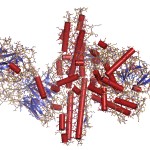
Persistent idiopathic dentoalveolar pain (PIDP) is a unilateral intraoral dentoalveolar pain with varying clinical manifestations that is present for more than 2 hours every day for more than three months that cannot be explained within the context of other diseases or disorders. It has previously been known as atypical odontalgia, phantom tooth pain, and neuropathic tooth pain and as a subgroup within persistent idiopathic or atypical facial pain.
It reportedly more common in women in their mid-forties with a suggested upper limit of its prevalence of 3-4%. PIDP is associated with persistent pain of moderate intensity although the quality is highly variable. Most patients have sensory abnormalities (cold, touch, pinprick) on the affected side and reduced quality of life. Management is symptom-based and includes a range of topical and/or systemic treatments (eg, local anaesthesia, capsaicin, serotonin and norepinephrine re-uptake inhibitors). More recently, botulinum neurotoxin A (BONT-A) has been suggested as a treatment.
The aim of this review was to evaluate studies investigating the pain-relieving effects of BONT-A in patients with persistent idiopathic dentoalveolar pain.
Methods
Searches were conducted in the PubMed, Scopus and Web of Science databases for studies investigating the use of BONT-A in patients diagnosed with persistent idiopathic dentoalveolar pain. Only studies published between 1980 and 2020 and published in English were considered. Two reviewers independently screened, selected and extracted data from the studies. Quality was assessed using the Cochrane risk of bias tool for randomised controlled crials and the 12 items quality assessment tool for observational studies (pre-post) studies with no control group. A narrative summary was presented.
Results
- 3 uncontrolled observational studies involving a total of 21 patients were included.
- Two of the studies were prospective open-label studies the third a retrospective case-series.
- All 21 patients had prior experience of systemic treatments antidepressants, antiepileptics, non-steroidal anti-inflammatory drugs or opioids without an adequate pain-relieving effect.
- Concentration, dosage, administration and follow-up periods varied across the 3 studies.
- Pain intensity and adverse events were evaluated in all studies.
- 2 studies reported an average pain reduction of 50% or more one study 75%.
- Latency before analgesic effect varied from 3-14 days.
- Duration of analgesic effect varied from 2-6 months.
Conclusions
The authors concluded: –
This systematic review shows that presently the level of scientific evidence is insufficient to evaluate the pain-relieving effect of BONT-A injections in patients with PIDP. There are indications that BONT-A injections could be a possible management option for patients with PIDP that seems to be safe and with few adverse events. There is a need for well-designed placebo-controlled, double-blind (Randomised controlled trials) RCTs.
Comments
While the authors have searched 3 databases restricting the inclusion criteria to studies published in English may have excluded potentially relevant studies. However, this does appear to be an area where only a very limited number of clinical studies have been undertaken. The 3 studies that were included were very small with the largest only involving 9 patients and no control group. As the authors note two of the included studies were open-label so the patients were aware they were receiving BONT-A injections with the aim of reducing pain and the third was a retrospective case-series. So, while the quality of the included studies was assessed as fair all three have potential for significant bias. While all three studies used the same agent there were variations in the concentration dosage and number of administrations. Follow-up periods also ranged from 3 – 48 months. Although all 3 studies considered adverse effects, and none were reported the very small size of the studies means that there are unlikely to be manifest. The 3 studies included in this review are of high risk of bias providing evidence of very low certainty. Consequently high quality, well-conducted and reported RCTs of appropriate size and duration need to be conducted to provide good evidence for this distressing condition. Given the uncommon nature of PIDP multi-centre studies are likely to be needed to help in recruiting patients to ensure good sample sizes.
Links
Primary Paper
Dawson A, Dawson J, Ernberg M. The effect of botulinum toxin A on patients with persistent idiopathic dentoalveolar pain-A systematic review. J Oral Rehabil. 2020 Sep;47(9):1184-1191. doi: 10.1111/joor.13053. Epub 2020 Jul 22. PMID: 32640063.
